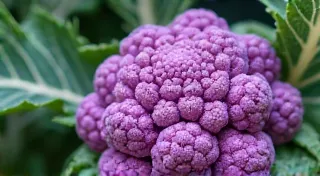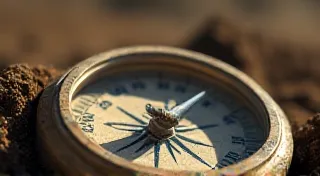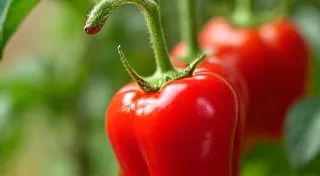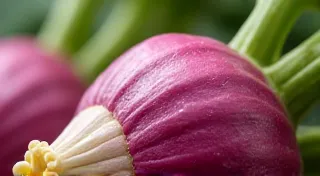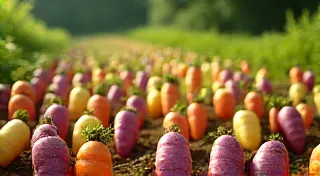Fractured Seasons: Embracing Imperfection in a Kaleidoscope of Vegetables
There's a certain melancholy beauty in things that bear the marks of time and use. Think of an antique accordion, its bellows scarred with the ghosts of countless melodies, its keys worn smooth by loving fingers. Each imperfection isn't a flaw; it's a testament to a life lived, a story whispered. It echoes the same feeling I get when I harvest a crop of vegetables that defy the rigid expectations of modern agriculture - a knobby carrot, a purple potato marbled with white, a beet shaped like a heart. We’ve become accustomed to uniformity, to the pristine perfection showcased in supermarkets, but have we lost something vital in that pursuit? Have we forgotten the inherent beauty in the fractured, the unexpected, the wonderfully imperfect?

The Lost Language of Heirlooms
For generations, vegetable gardening wasn't about aesthetics; it was about survival. Farmers selected the seeds that thrived in their specific microclimates, the ones that tasted best, the ones that stored the longest. This wasn't a calculated process of genetic engineering, but an intuitive understanding of the land and its bounty. The result was a stunning variety of heirloom vegetables – varieties passed down through families, carrying within them the history of a place and its people. Consider the Chioggia beet, with its striking rings of crimson and white, a visual surprise hidden within its earthy exterior. Or the 'Russian Blue' potato, its skin a captivating shade of lavender. These weren’t born from laboratories; they emerged from the patient observation and careful selection of those who came before us.
The rise of industrial agriculture, while increasing yields and enabling global distribution, has inadvertently led to a homogenization of our food. A few varieties, deemed “ideal” for their uniform shape, size, and shelf life, have dominated the market, pushing aside countless others. The visual and culinary landscape has become monotonous. The desire for uniformity has led to the neglect of vibrant colors like those found in a row of stunning rainbow carrots – a loss of biodiversity, a silencing of a rich narrative held within our gardens.
Wabi-Sabi in the Garden
The Japanese philosophy of wabi-sabi offers a compelling framework for appreciating the beauty of imperfection. It finds elegance in transience, celebrates the patina of age, and finds profound meaning in the asymmetrical and the flawed. A chipped teacup isn’t discarded; it’s valued for its history. A gnarled tree isn't seen as defective; it’s admired for its resilience. The same principle applies beautifully to vegetable gardening.
Imagine a row of carrots, all perfectly straight and uniform. They’re undoubtedly impressive. But now picture a row of carrots, some long and slender, others short and stout, some slightly twisted, each a unique character in their own right. The latter evokes a sense of wildness, of authenticity, of a connection to something deeper than mere aesthetics. A purple potato that's been nibbled on by a garden slug isn't ruined; it’s a story etched onto its skin – a mark of the life it has lived.
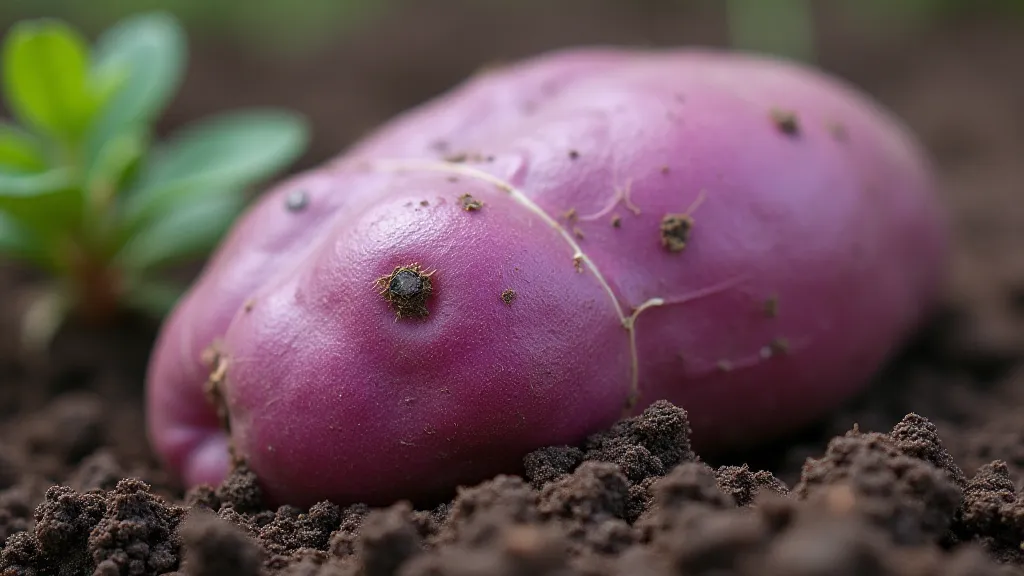
Cultivating the Unusual: A Gardener’s Guide
Growing unusual and colorful vegetables isn't necessarily more difficult than growing conventional varieties, but it does require a willingness to embrace the unexpected. Seeds can be obtained from heirloom seed companies, online retailers, and even traded with other gardeners. Be prepared for slight variations in appearance. A 'Black Krim' tomato might be darker or lighter than what you’ve seen in a catalogue. A 'Painted Lady' runner bean might have less pronounced markings. This isn't a failure; it’s the beauty of natural variation.
Soil health is paramount. Healthy soil produces vigorous plants, which are better able to withstand minor imperfections and express their true character. Compost, cover crops, and natural fertilizers are invaluable tools in building healthy soil. It's fascinating to think how varieties like vibrant tri-color chard thrive in well-nourished soil, showcasing their colors with remarkable intensity. Don't be afraid to experiment! Try different varieties, explore new techniques, and most importantly, observe your plants closely. Learn to read their language, understand their needs, and appreciate their unique personalities.
Consider the aesthetic possibilities beyond just color. Plant vegetables with varying heights and textures to create a layered and visually interesting garden bed. Group vegetables with similar needs together, but don't be afraid to mix and match. A row of vibrant kale can provide a striking contrast to a bed of earthy beets. A sprawling pumpkin vine can soften the edges of a tidy row of carrots.
The Broader Impact of Heirloom Gardening
Beyond the immediate visual appeal and culinary delights, choosing heirloom varieties contributes to a broader effort in preserving agricultural biodiversity. The uniformity we’re accustomed to in supermarkets represents a drastic narrowing of the genetic pool of our food crops. This lack of diversity makes our food systems vulnerable to pests, diseases, and climate change. By actively seeking out and cultivating heirloom seeds, we are helping to safeguard these precious genetic resources for future generations. We're acting as custodians, ensuring that these unique legacies aren't lost to the relentless pressure of commercial agriculture.
Restoration of the Narrative
There’s a quiet joy in reconnecting with the past through gardening. Growing heirloom vegetables isn't just about growing food; it's about preserving a cultural heritage. Each seed carries within it a story – a legacy of ingenuity, adaptation, and resilience. By cultivating these forgotten varieties, we are not only enriching our gardens but also restoring a vital link to our ancestors. And with careful selection, you can achieve stunning visual effects - imagine the possibilities when combining the earthy hues of beets with the playful colors of kaleidoscope squash.
Think of it as a restoration project – not of a single object, but of a narrative. Just as a skilled restorer meticulously cleans and repairs an antique accordion, revealing its original beauty, we can nurture our gardens, coaxing forth the vibrant colors and unique shapes of forgotten vegetables. The imperfections aren't flaws; they're the marks of authenticity – a testament to the enduring power of nature and the wisdom of those who came before us.
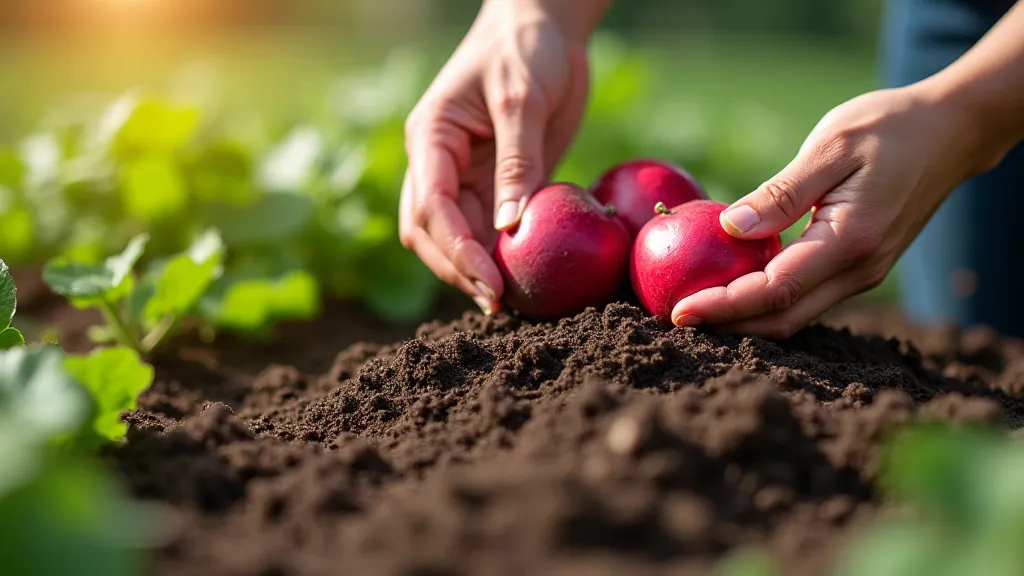
Let us embrace the fractured seasons, the knobby carrots, the marbled potatoes, the vegetables that defy convention. Let us celebrate the beauty of imperfection and rediscover the richness of our culinary heritage. Let our gardens be a testament to the enduring power of nature and the beauty of the unexpected. Cultivating a garden filled with unusual varieties isn't merely an aesthetic choice; it’s an act of resistance against the homogenization of our food, a celebration of diversity, and a connection to the enduring wisdom of generations past.
